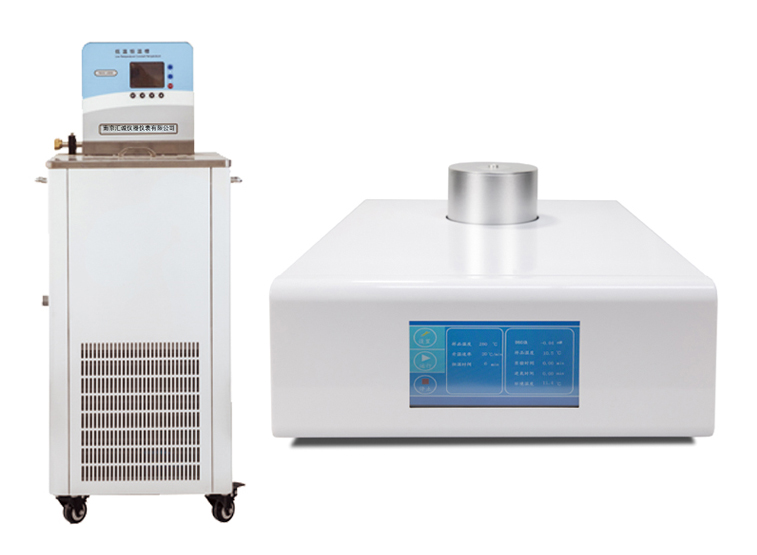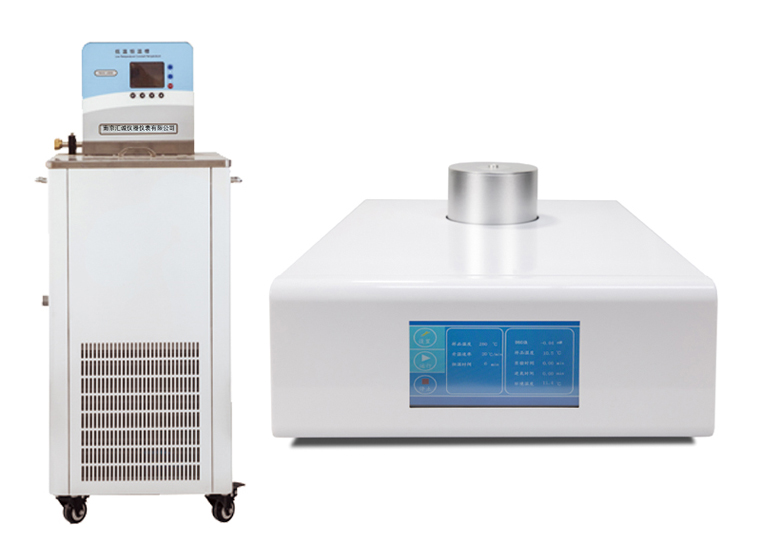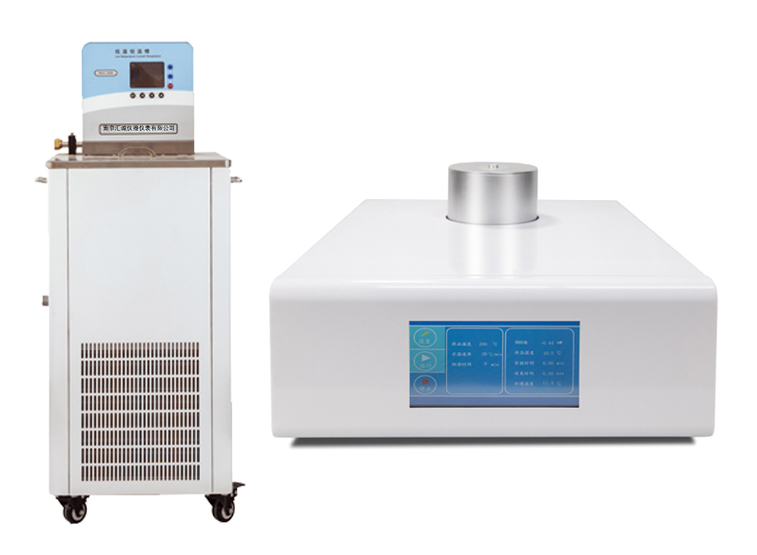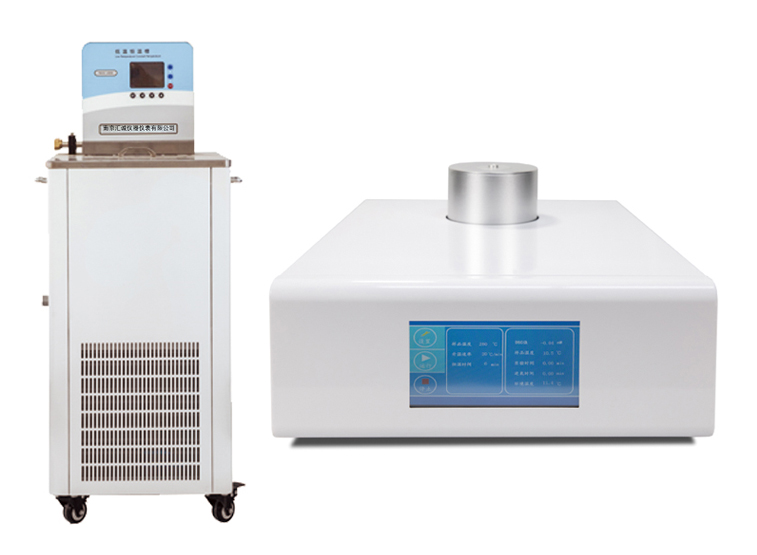Application of thermal analysis in polymer materials
- Time:2020-06-16 08:58
- Source:未知
- popularity:
1、 Preface
Thermal analysis method is a technology to measure the relationship between the properties of substances and temperature under the condition of temperature controlled by program [1]. In the process of heating or cooling, with the change of the structure, phase state and chemical properties of the substance, the mass, temperature, hot melt change, size, acoustooptic electromagnetic and mechanical characteristics will change accordingly. Therefore, thermal analysis is widely used in qualitative and quantitative characterization of thermal properties, physical properties, mechanical properties and stability of materials.
With the rapid development of polymer industry, in order to develop new polymer materials and control the quality and performance of polymer materials, it is necessary to measure the melting temperature, glass transition temperature, mixture composition and thermal stability of polymer materials. In the determination of these parameters, thermal analysis is the main analytical tool.
Thermal analysis technology mainly includes: thermogravimetry (TG), differential thermal analysis (DTA), differential scanning calorimetry (DSC), thermomechanical analysis (TMA), dynamic thermomechanical analysis (DMA), etc. In this paper, the principles, instruments and applications of these thermal analysis techniques in the field of polymer materials are briefly introduced.
2、 Thermogravimetry (TG) and its application in polymer materials
Thermogravimetry is to measure the relationship between the mass and the temperature of the substance under the programmed temperature control. Generally, thermogravimetry can be divided into non isothermal thermogravimetry and isothermal thermogravimetry. It has the advantages of simple operation, high accuracy, sensitivity, rapidity and sample miniaturization.
Thermogravimetric analysis is mainly used to study chemical changes such as thermal stability, thermal decomposition and oxidative degradation of materials in inert gas, air and oxygen; it is also widely used to study all physical processes involving quality changes, such as determination of water, volatile matter and residue, adsorption, absorption and desorption, gasification speed and heat, sublimation speed and heat; polymers with fillers or Composition of the blend, etc. [2].
The instrument used for thermogravimetric analysis is generally called thermobalance. Its measuring principle is that in the process of heating the tested object, the change of mass is caused by the change of physical or chemical properties of the substance. By recording the curve of the program when the mass changes, analyzing the temperature point that causes the change of the material properties and the energy absorbed or released by the tested object in the process of the change of physical properties, the thermal properties of the substance can be studied.
For example, thermogravimetry can accurately analyze the content of fillers in polymer materials.
According to the physical and chemical characteristics of the packing, the type of packing can be determined. In general, polymer materials are basically decomposed at about 500 ℃, so for the weight loss between 600-800 ℃, it can be judged as the decomposition of carbonate, and the weight loss is the carbon dioxide released, and the content of carbonate can be calculated. The remaining amount is the content of the heat stable filler, such as: glass fiber, titanium dioxide, zinc barium, etc. [3]
However, the content of packing can only be obtained by TGA, and the type of packing can not be determined. The type of packing can be determined by infrared analysis of TGA residue.
3、 DTA and its application in polymer materials
Differential thermal analysis is the most widely used thermal analysis technology. It is a technology to establish the relationship between the temperature difference and the temperature of the measured substance and the reference substance under the programmed temperature control.
The measurement principle of DTA is to place the tested sample and the reference sample in the same environment at the same time and heat up at the same time. The reference sample often chooses the material with good thermal stability. In the process of heating up the two samples, the temperature of the tested sample and the reference sample will change due to the change of the characteristics of the tested sample, resulting in the absorption and exothermic reaction, resulting in the change of their own temperature There are differences. The change curve of temperature difference in the process of temperature rise and temperature rise is recorded by computer software. Finally, the corresponding temperature value (the temperature point causing the temperature difference) at the time when the temperature difference occurs and the curve area after the completion of the temperature change are obtained, and the change process of physical characteristics and energy of the tested sample in the temperature control process are obtained.
Differential thermal analysis can be used to study the glass transition temperature, melting and crystallization effect, degradation, etc. it can measure the properties of polymer materials under high temperature and pressure, so it has been widely used. [4]
But DTA also has some limitations, that is, it can not provide the specific value of heat in the process of heat absorption and release, so DTA can not carry out quantitative thermal analysis and dynamic research.
4、 Differential scanning calorimetry (DSC) and its application in polymer materials DSC technology is to change the temperature according to the procedure, so that the temperature difference between the sample and the standard sample is zero. Measure the difference of heat input per unit time between the two. That is to say, the temperature and heat in the process of substance transfer can be quantified. DSC technology can be used to measure glass transition temperature, melting, crystallization, curing reaction, specific heat capacity and thermal history. The amount of sample is very small, a few milligrams is enough. In addition, a new polymer measurement method called dynamic DSC (temperature modulated DSC) has attracted people's attention recently.
The DSC thermal difference curve is almost the same as DTA in appearance, but the displacement away from the baseline on the curve represents the speed of heat absorption or release, while the area of peak or valley represents the change of heat generated during transformation. The sample in DSC is at the temperature program at all times
Thermal analysis method is a technology to measure the relationship between the properties of substances and temperature under the condition of temperature controlled by program [1]. In the process of heating or cooling, with the change of the structure, phase state and chemical properties of the substance, the mass, temperature, hot melt change, size, acoustooptic electromagnetic and mechanical characteristics will change accordingly. Therefore, thermal analysis is widely used in qualitative and quantitative characterization of thermal properties, physical properties, mechanical properties and stability of materials.
With the rapid development of polymer industry, in order to develop new polymer materials and control the quality and performance of polymer materials, it is necessary to measure the melting temperature, glass transition temperature, mixture composition and thermal stability of polymer materials. In the determination of these parameters, thermal analysis is the main analytical tool.
Thermal analysis technology mainly includes: thermogravimetry (TG), differential thermal analysis (DTA), differential scanning calorimetry (DSC), thermomechanical analysis (TMA), dynamic thermomechanical analysis (DMA), etc. In this paper, the principles, instruments and applications of these thermal analysis techniques in the field of polymer materials are briefly introduced.
2、 Thermogravimetry (TG) and its application in polymer materials
Thermogravimetry is to measure the relationship between the mass and the temperature of the substance under the programmed temperature control. Generally, thermogravimetry can be divided into non isothermal thermogravimetry and isothermal thermogravimetry. It has the advantages of simple operation, high accuracy, sensitivity, rapidity and sample miniaturization.
Thermogravimetric analysis is mainly used to study chemical changes such as thermal stability, thermal decomposition and oxidative degradation of materials in inert gas, air and oxygen; it is also widely used to study all physical processes involving quality changes, such as determination of water, volatile matter and residue, adsorption, absorption and desorption, gasification speed and heat, sublimation speed and heat; polymers with fillers or Composition of the blend, etc. [2].
The instrument used for thermogravimetric analysis is generally called thermobalance. Its measuring principle is that in the process of heating the tested object, the change of mass is caused by the change of physical or chemical properties of the substance. By recording the curve of the program when the mass changes, analyzing the temperature point that causes the change of the material properties and the energy absorbed or released by the tested object in the process of the change of physical properties, the thermal properties of the substance can be studied.
For example, thermogravimetry can accurately analyze the content of fillers in polymer materials.
According to the physical and chemical characteristics of the packing, the type of packing can be determined. In general, polymer materials are basically decomposed at about 500 ℃, so for the weight loss between 600-800 ℃, it can be judged as the decomposition of carbonate, and the weight loss is the carbon dioxide released, and the content of carbonate can be calculated. The remaining amount is the content of the heat stable filler, such as: glass fiber, titanium dioxide, zinc barium, etc. [3]
However, the content of packing can only be obtained by TGA, and the type of packing can not be determined. The type of packing can be determined by infrared analysis of TGA residue.
3、 DTA and its application in polymer materials
Differential thermal analysis is the most widely used thermal analysis technology. It is a technology to establish the relationship between the temperature difference and the temperature of the measured substance and the reference substance under the programmed temperature control.
The measurement principle of DTA is to place the tested sample and the reference sample in the same environment at the same time and heat up at the same time. The reference sample often chooses the material with good thermal stability. In the process of heating up the two samples, the temperature of the tested sample and the reference sample will change due to the change of the characteristics of the tested sample, resulting in the absorption and exothermic reaction, resulting in the change of their own temperature There are differences. The change curve of temperature difference in the process of temperature rise and temperature rise is recorded by computer software. Finally, the corresponding temperature value (the temperature point causing the temperature difference) at the time when the temperature difference occurs and the curve area after the completion of the temperature change are obtained, and the change process of physical characteristics and energy of the tested sample in the temperature control process are obtained.
Differential thermal analysis can be used to study the glass transition temperature, melting and crystallization effect, degradation, etc. it can measure the properties of polymer materials under high temperature and pressure, so it has been widely used. [4]
But DTA also has some limitations, that is, it can not provide the specific value of heat in the process of heat absorption and release, so DTA can not carry out quantitative thermal analysis and dynamic research.
4、 Differential scanning calorimetry (DSC) and its application in polymer materials DSC technology is to change the temperature according to the procedure, so that the temperature difference between the sample and the standard sample is zero. Measure the difference of heat input per unit time between the two. That is to say, the temperature and heat in the process of substance transfer can be quantified. DSC technology can be used to measure glass transition temperature, melting, crystallization, curing reaction, specific heat capacity and thermal history. The amount of sample is very small, a few milligrams is enough. In addition, a new polymer measurement method called dynamic DSC (temperature modulated DSC) has attracted people's attention recently.
The DSC thermal difference curve is almost the same as DTA in appearance, but the displacement away from the baseline on the curve represents the speed of heat absorption or release, while the area of peak or valley represents the change of heat generated during transformation. The sample in DSC is at the temperature program at all times
Recommendations
- 2020-06-23Test of enthalpy of melting and crystallization of non ferrous materials differen
- 2020-06-22Test of induction period of polyolefin oxidation
- 2020-06-19Dispersion of carbon black in polyethylene geomembrane
- 2020-06-18The advantage of DSC in analyzing the crystallization rate of polypropylene
- 2020-06-16Determination of thermal stability (oxidation induction period) of plastics indus
- 2020-06-16Application of thermal analysis in polymer materials
- 2020-06-16Application of differential scanning calorimeter (DSC) in drug analysis
- 2020-06-15The application of DSC method in curing degree test of thermosetting resin
Recommended products
-
 DSC-600C Differential Scanning
Differential Scanning Calorimetry (Heat Flow DSC), as a classical therm...
DSC-600C Differential Scanning
Differential Scanning Calorimetry (Heat Flow DSC), as a classical therm... -
 DSC-600C Differential Scanning
Differential Scanning Calorimetry (Heat Flow DSC), as a classical therm...
DSC-600C Differential Scanning
Differential Scanning Calorimetry (Heat Flow DSC), as a classical therm... -
 DSC-600C Differential Scanning
Differential Scanning Calorimetry (Heat Flow DSC), as a classical therm...
DSC-600C Differential Scanning
Differential Scanning Calorimetry (Heat Flow DSC), as a classical therm... -
 DSC-600C Differential Scanning
Differential Scanning Calorimetry (Heat Flow DSC), as a classical therm...
DSC-600C Differential Scanning
Differential Scanning Calorimetry (Heat Flow DSC), as a classical therm...
Solution
hot-sale product
contact us
- Nanjing Huicheng Instrument Co., Ltd
- Service hotline:025-52702696
- after-sale service:025-52702696
- E-mail:njhcyq@163.com
- Company address:Building 3, runjing Technology Plaza, No.9, Tianhang West Road, Jiangning District, Nanjing

